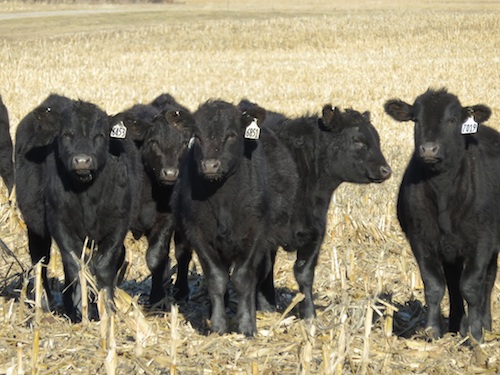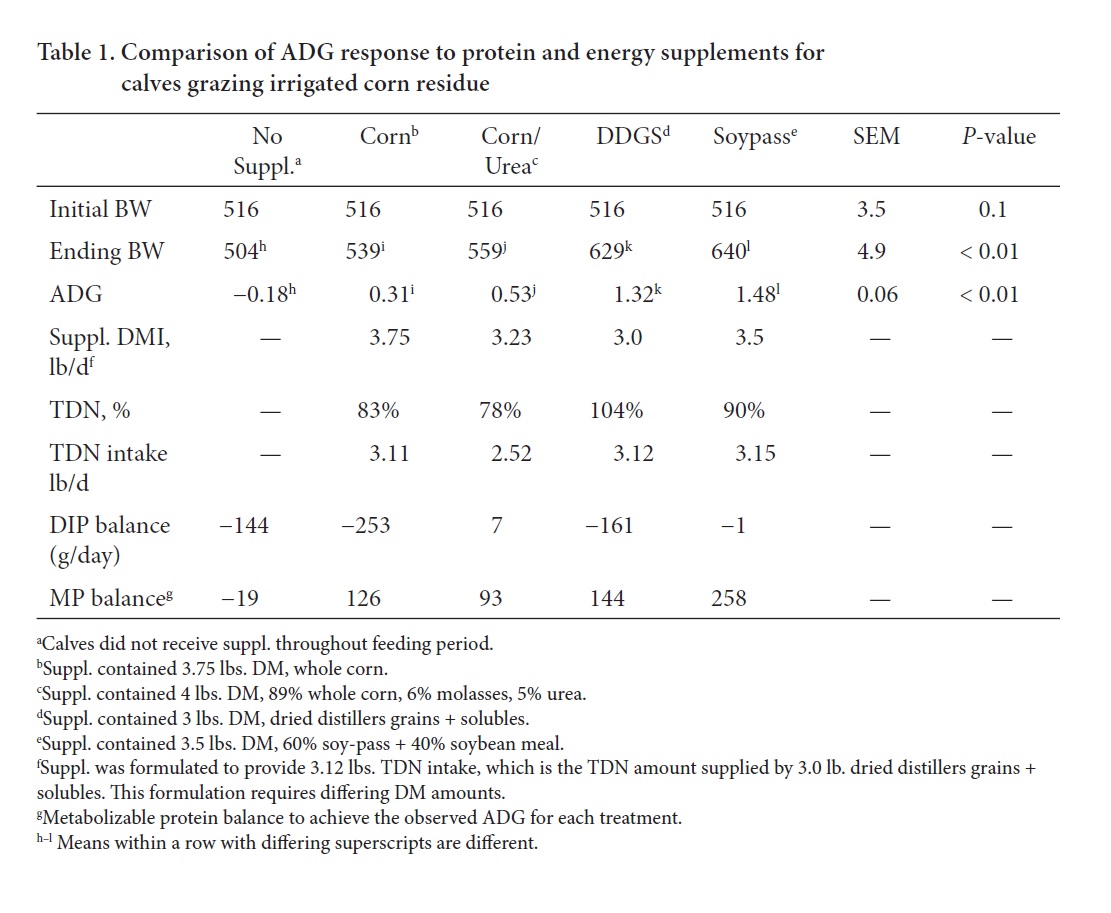Should You Supplement Steer Calves Grazing Cornstalks?
October 2016

This article is a research summary from the 2016 Nebraska Beef Report.
While past research has shown that mature, pregnant, cows without a calf at side can be maintained on corn residue without protein and energy supplementation, this is not the case for growing calves.
What can be used to balance this deficiency?
Distillers grains is a great source of both protein (30% CP) and energy (108% TDN). Additionally, distillers grains is high in rumen undegradable protein (RUP) which is important for skeletal and muscle growth in young calves. Previous research at the University of Nebraska has shown that feeding distillers grains to growing calves grazing corn residue is a good way to optimize growth.
However, distillers grains prices fluctuate and there may be times and regions within the state that distillers is not the most economical choice of supplements. Therefore, the authors of this report wanted to evaluate other protein and energy sources to determine the best alternatives if distillers is not the most economically available supplement.
The authors used 75 (7-9 month old) steer calves weighing 516 pounds grazing irrigated cornstalks at a moderate stocking rate. Those steers receiving supplement were individually fed the supplement. The treatments developed were:
- a combination of soypass (a heat treated soybean meal with increased RUP) and soybean meal,
- dried distillers plus solubles,
- a combination of corn, molasses, and urea,
- dry rolled corn only, and
- no supplement.
The average daily gain and final body weight were greatest for the calves fed soypass and soybean meal followed by the calves fed distillers grains (Table 1).
The authors believed they had calculated these to provide the same protein and energy, but thought the TDN of the soypass treatment may have been underestimated resulting in overfeeding of this treatment.
Due to palatability issues of the urea, the corn plus urea treatment was only consumed at 80% of the amount needed to make it equal to the other treatments and likely contributed to the lower gains of those calves.
The lack of sufficient rumen degradable protein (RDP) in the corn only treatment is most likely the biggest contributing factor to the poor performance of those calves.
The fact that the non-supplemented calves lost weight during the winter grazing suggests residue alone is not enough to meet the growth requirements of the young calf.
The authors concluded the results of this experiment suggest supplements which provide both RUP and RDP will produce the best gains because they meet the protein needs of both the rumen microbes and the tissue growth of the calf. Additionally, supplementing corn with or without urea will not provide acceptable gains for young calves grazing residue.
Reference
Benjamin Tibbitts
Jim MacDonald
Rick Funston
Cody Welchons
Robert Bondurant
Henry Hilscher
Summarized by Karla Jenkins
University of Nebraska–Lincoln
back to Backgrounding, Yearling and Feedlot Nutrition and Management
